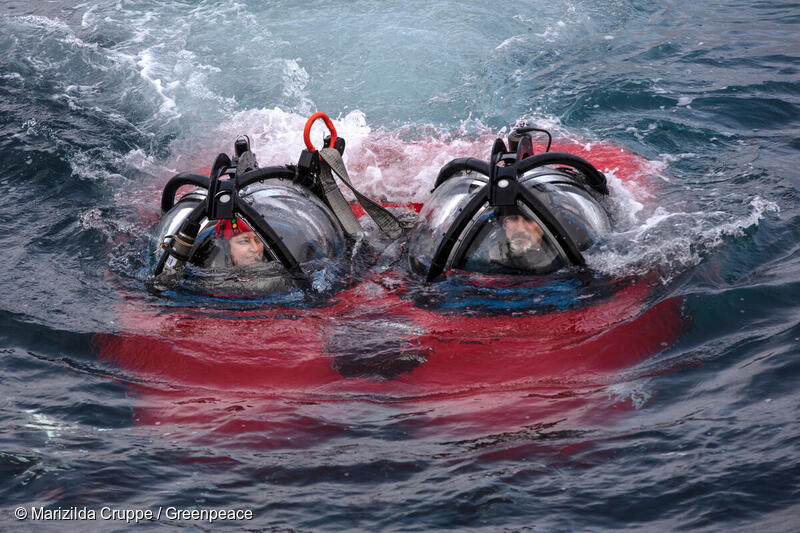What we saw in Antarctica and why it matters for all of us

In hindsight, it was kind of a crazy idea.
In the middle of a pandemic, individuals from across the Greenpeace network set out to bring people from twenty-one countries and seven organizations to one of the southernmost cities in South America, along with a Greenpeace ship and a Canadian submarine, to sail to Antarctica to survey seafloor habitats. The ship carrying the sub was delayed. Several of us, including the sub pilot (me), tested positive for COVID while quarantining before boarding. The weather looked bad, our window was shrinking, and there were nervous discussions about how much time we could lose without the whole thing falling apart.
But the stakes were pretty high.
The UN is negotiating a Global Ocean Treaty, and if they get it right, it will enable us to scale up sanctuaries for the first time. That’s a big deal, as sanctuaries are the best tool we have to protect biodiversity, rebuild depleted populations, and give our oceans a fighting chance to survive the impacts of industrial fishing, plastic pollution, and climate change. Meanwhile, the Antarctic Ocean Commission (CCAMLR) is meeting later this year to consider proposals to create two new massive sanctuaries – either of which would be bigger than anything in place today. The team was united in our belief that we had to go ahead.
It is hard enough to pull off successful submarine dives in places where we don’t have to deal with freezing temperatures and constantly changing ice conditions, but for Antarctica we expected to lose at least a third of our potential dives to weather and equipment issues. Instead, miraculously, we were able to dive every day.
After a successful test dive to 465 meters depth, near Half Moon Island, we completed 12 research dives in 10 days.
The diversity and abundance of marine life we encountered was astounding: the slopes, canyons and walls we surveyed were frequently covered with brightly colored corals, sponges, hydroids, feather stars, bryozoans, sea squirts, and countless other animals. At least ten of the dive sites are strong candidates to be designated as Vulnerable Marine Ecosystems, which will bring them immediate protection from fishing.
We pressed on, deep into the Weddell Sea, which is typically covered with sea ice. Our recent attempts to work here were stymied by heavy ice conditions, but this time we found an open path south. We conducted dives that we believe were the furthest south research sub dives ever made. It was incredible to explore such a remote wilderness, but shocking to see how quickly climate change is transforming the region. In places that are nearly always covered by ice, at depths that have never seen the light of the sun, we found rich, thriving invertebrate communities that surprised us all with their bright orange, red, and yellow colors.
The views from the deck of the ship were as astounding as those from the submarine.
Humpback whales were constant companions, gorging on krill before heading north to breed. Orcas harassed the whales and fed on fur seals. Albatrosses, skuas, cormorants and petrels were among the many seabirds we encountered. Penguins were my favorite of all, fast and sleek in the water and cartoonishly goofy on land or icebergs. The backdrop for all of this included sheer black cliffs, snow-covered mountains, frozen waterfalls, and a parade of icebergs of stunning shapes and hues.
I am glad we refused to give up on this expedition. The images, data, and stories from our work here will jumpstart efforts to build support for sanctuaries. These are uncertain times, but it is clear that international cooperation in support of a green and peaceful planet is more important than ever. Continuing on our current path – to catching the last fish, or drilling the last oil deposit – is the truly crazy idea.
Together, we can build a movement centered in environmental and social justice that can steer us on a saner course.
